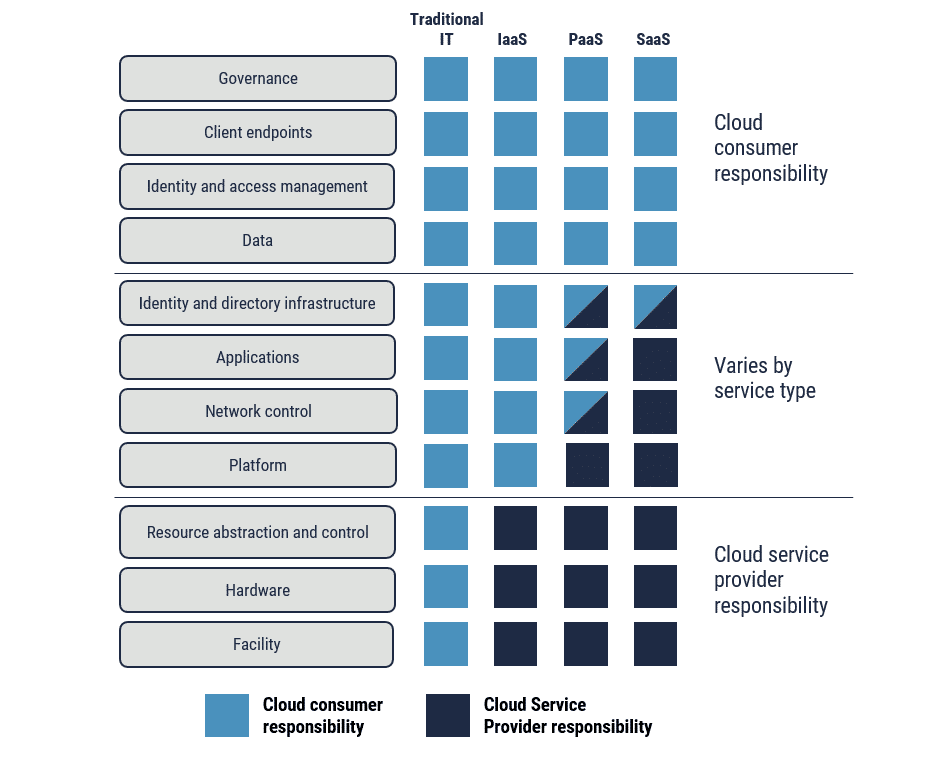The world of managed service providers (MSPs) has drastically transformed in the last decade. The rise of public clouds, such as AWS, Azure, and GCP, has led to more complex IT architectures. Most IT environments now maintain new cloud computing technologies, artificial intelligence, large-scale networks, leverage automation, and more. MSPs have used the growth of “cloud-first” and “SaaS-first” trends as a catalyst for opportunity. They have new opportunities to expand service lines and grow their revenue in new ways. An increasingly popular example is the Cloud Service Providers programs (CSPs) that permit third-party cloud distribution.
These changes in the IT landscape have led to significant changes in delivery models and higher customer demands. To maintain a competitive edge, MSPs and CSPs must increase their efficiency and adapt their delivery quickly. Cutting-edge providers are quickly learning that technologies like orchestration, automation, cost management tools, and Remote Monitoring and Management (RMM) platforms can help them keep up. In cases where providers are having trouble keeping up, clients are quick to signal their dissatisfaction with the results
As we saw in our service provider industry report, 4 out of 5 MSP/CSP clients are so frustrated they are actively looking to replace their provider within the next year. Less than 20% of respondents indicated they had a deep partnership with their service provider.
Simply put, there are challenges related to everything from FinOps to cybersecurity that MSPs and CSPs must address to be effective, trusted advisors to their clients and stay ahead of the competition.
This article details eight essential MSP best practices to help service providers avoid common mistakes and delight their clients. Specifically, we will cover how to leverage automation, cloud computing, and third-party tools to streamline operations and optimize service.
Summary of MSP best practices
The table below summarizes the 8 MSP best practices we will explore in this article.
| # | MSP best practice | How it helps service providers succeed |
|---|---|---|
| 1 | Focus obsessively on the customer | This means knowing a vertical market inside and out, paying close attention to what customers say, and encouraging a culture of continuous improvement. |
| 2 | Help clients understand their IT estate | The advantages of moving to the cloud and how to realize these advantages (scalability, flexibility, security, automation, and cost). |
| 3 | Enable modernization & innovation for your clients | Use technologies like containers, microservices, and serverless to build cloud-native apps that modern, innovative businesses can use. |
| 4 | Build recurring revenue streams | Build recurring revenue streams that take the operational burden away from clients. These include monitoring, management, support, and reserved and spot instances. |
| 5 | Partner with multi-cloud vendors | Partner with companies like CloudBolt that offer value-added multi-cloud (AWS, Azure, GCP) and multi-functional (cost, security, governance) tools. |
| 6 | Draw the line of responsibilities between cloud provider and client | Draw a line between the cloud service provider and the client and concentrate on the high-value problems. |
| 7 | Leave time to innovate | It’s easy to focus on getting new clients and delivering solutions so much that there is no time left for innovation. To become a market leader, you must invest enough time, energy, and money into innovation. |
| 8 | Do the right thing (adopt sustainable practices) | Businesses are making decisions based on their view of service providers as important partners in the sustainability equation. |
The evolution of the MSP/CSP market
The MSP and CSP markets have changed drastically in the last two decades. In the early 2000s, IT support and managed services were manual, and most problems required on-site support. The rise of RMM software about 15 years ago, changed the landscape by offering robust remote managed services, such as proactive monitoring, centralized patch management, and powerful scripting capabilities.
Virtualization also played a critical role in the evolution of MSPs and CSPs. With virtualization, service providers could provision new storage in seconds, while the same task would have taken days or weeks previously. Next came public cloud services such as Azure, AWS, and GCP. With public cloud platforms, MSPs and their clients could scale their businesses faster and with lower capex.
Today, most IT directors and CIOs across the globe now have a “cloud-first”, “SaaS-first” strategy. This shift to the cloud and the rise of SaaS have accelerated the emergence of CSPs focusing specifically on cloud services and modern digital businesses.
8 MSP best practices to succeed in the cloud-first era
While there are some timeless pieces of MSP advice, the cloud-first era comes with several unique challenges. The eight MSP best practices below include some of those timeless truths (like the importance of customer focus) while also accounting for the challenges facing modern CSPs and MSPs.
“The features and support CloudBolt provides will allow my team to spend more time focusing on the delivery of quality customer outcomes.”
MSP best practice #1: Focus obsessively on the customer
Any MSP that wants to build a successful business needs to be obsessed with their customers. That means knowing a vertical market inside and out, paying close attention to what customers say, and creating a culture of continuous improvement.
As we saw in our service provider industry report, with 80% of clients looking to find a new provider within the next 12 months, many MSPs and CSPs are missing the mark here. So, what should service providers do to maintain a strong customer focus?
- Conduct extensive market research and gain a deep understanding of the industry’s challenges, trends, and opportunities
- Design make services and solutions fit the needs of customers in a given market
- Understand what’s going on in the industry and try to predict what customers will want before they ask for it
- Listen to, and adapt based on, customer feedback
Additionally, fostering a culture of continuous improvement is essential. CSPs can ensure that they stay ahead of the competition through regular internal reviews, training, and development of their employees and customer service.
By always putting the customer first, CSPs can build a loyal customer base, retain more customers, and drive growth.
MSP best practice #2: Help clients understand their IT estate
Working closely with clients to understand their current IT estate and how it can be improved to make the most of the benefits of moving to the cloud is part of this practice.
Moving to the cloud has benefits like growing as needed, being flexible, safe, automated, and saving money. In addition, scalability lets clients add or take away IT resources quickly and easily without buying expensive new hardware. Flexibility lets clients use their IT resources anywhere, anytime, and on any device. By using the latest security technologies and best practices, security is improved.
Automation helps IT processes run more smoothly and reduces the need for manual work. Cost savings come from using a pay-as-you-consume model, eliminating the need for large up-front capital expenditures.
Why is this important? According to our industry report, 89% of enterprises believe a CSP could help them with their digital transformation goals. Meeting that expectation can help service providers grow their business.
Helping clients understand their IT estate also means figuring out if they have any old systems or apps holding them back and planning to update or get rid of them. This process will also identify any opportunities for consolidation, virtualization, or cloud migration. By working closely with clients to understand their IT estate, CSPs can help them take full advantage of the benefits of moving to the cloud and ultimately help them become more agile, efficient, and competitive.
MSP best practice #3: Enable modernization & innovation for your clients
Clients know they don’t have all the answers. 95% of our service provider industry report respondents agreed they had a very real skills deficit. This is precisely the gap MSPs and CSPs need to help them fill. It’s the service provider’s job to be the expert that helps their client find the solutions that help them modernize infrastructure and innovate.
Working closely with clients to learn about their business needs and using technology to help them reach those goals is an important MSP best practice. For many cloud-first businesses, this means using technologies like containerization, microservices, and serverless architecture to build cloud-native apps that solve business problems effectively.
By using these new technologies, service providers can help clients build more flexible, scalable, and secure applications. This can help clients update their IT infrastructure and exploit new business opportunities. By keeping up with the latest technologies, MSPs and CSPs can also help their clients stay competitive in today’s fast-paced business world.
MSP best practice #4: Build recurring revenue streams
Building recurring income streams is one of the most important parts of running a successful service business. For MSPs and CSPs and their clients, recurring revenue streams create a win/win. Clients focus less on IT operations and more on their core business. MSPs and CSPs gain a predictable and stable source of income for the CSP.
The best way to build recurring revenue streams is to offer services that align with the client’s business goals and are critical to their operations. Monitoring, management, support, and reserved and spot instances are just a few examples of services that clients are willing to pay for regularly.
Reserved and spot instances are two different pricing models for cloud computing services. Reserved instances are pre-purchased instances with a lower hourly rate for a longer-term commitment, providing cost savings for steady-state usage. Spot instances, on the other hand, let clients bid on cloud space that isn’t being used. This is a flexible and cost-effective option for applications that can start and stop at different times.
These services allow clients to focus on their core business activities while leaving the management of their cloud infrastructure to the CSP. The CSP, in turn, can provide the necessary support, monitoring, and management to ensure the clients’ cloud infrastructure is always running smoothly and optimally.
What’s the opportunity for service providers that get this right? According to our service provider industry report, 97% of businesses said that they would pay more for a cloud services provider that can do a good job.
It is also crucial for the CSP to continuously evaluate their services and add new ones that meet the evolving needs of their clients. The CSP can keep its current clients and bring in new ones by offering a full set of services.
Further, building recurring revenue streams helps mitigate the risks associated with one-time projects and provides a sustainable business model for the service provider.
MSP best practice #5: Partner with multi-cloud vendors
Partnering with multi-cloud vendors is a crucial best practice for CSPs and MSPs. The right partnerships enable service providers to better support their clients with broader options for their cloud needs. Multi-cloud benefits include:
- Spreading risk across different platforms.
- Lowering costs through better utilization.
- Increasing innovation through access to more tools and services.
By partnering with multi-cloud vendors, MSPs and CSPs reduce the likelihood their clients will need an additional service provider’s expertise. Our service provider industry report found that 88% of enterprises use two or more cloud service providers. Our service provider industry report found that 88% of enterprises use two or more cloud service providers, which suggests a real opportunity for MSPs and CSPs to help their clients save by becoming a “one-stop shop” for industry expertise.
When evaluating multi-cloud vendors, MSPs should look for partners that that provide value-added tools such as:
- Cloud management
- Cloud cost optimization
- Cloud security
- Cloud governance
CloudBolt is an example of a vendor that provides value-added multi-cloud tools for service providers. By partnering with vendors like CloudBolt, MSPs can take their cloud service offerings to the next level and provide their clients with a more comprehensive and streamlined cloud management experience.
Learn more about the growing complexity and the widening skills gap causing this dissatisfaction.
MSP best practice #6: Draw the line of responsibilities between cloud provider and client
Drawing the line of responsibilities between the cloud provider and the client is crucial to ensuring that the security and governance of the cloud environment are maintained effectively. To avoid confusion or misunderstandings, ensuring everyone knows their roles when managing cloud services is crucial. These include:
- Governance
- Client endpoints
- Identity and access management
- Data
- Identity and directory infrastructure
- Applications
- Network control
- Platform
- Resource abstraction and control
- Hardware and facility
As shown in the image below, the cloud service provider is responsible for the security of the cloud infrastructure and the management plane. At the same time, the client is responsible for the security of cloud workloads, such as web application gateways, network security groups, and availability groups.
The client should also be responsible for configuring the security features and capabilities provided by the cloud service provider. This shared responsibility model ensures that the cloud environment is safe on all levels and that both parties work together to keep the cloud infrastructure secure.

When focusing on challenging problems such as security, compliance, and risk management, it’s essential to understand that the responsibility for these areas cannot be shifted entirely to the cloud service provider. By clarifying who is responsible for what, both parties can focus on what they know best and ensure the cloud environment is safe, compliant, and ready to run business-critical apps and services.
MSP best practice #7: Leave time to innovate
When running an MSP business, balancing delivering solutions to clients with leaving time for innovation is essential. Keeping this balance is important to stay ahead in a competitive market and become a leader in your field. With a commitment to and investment in innovation, a service provider can exploit opportunities to develop new solutions and stay ahead of the competition.
One of the most important ideas behind this best practice is to give time and money to innovation. This could mean setting aside specific times, like once a week or once a month, for brainstorming, research and development, or testing out new ideas. This can help foster a culture of innovation by encouraging employees to think creatively and outside the box.
Another insight is to focus on innovation that is aligned with the company’s goals and objectives. By prioritizing innovation initiatives that align with the company’s strategy, resources can be effectively utilized, and the outcomes are more likely to have a significant impact. So, the service provider practice can keep its eye on the big picture and ensure that the time and money put into innovation produce the desired results.
MSP best practice #8: Do the right thing (adopt sustainable practices)
In today’s business landscape, it’s about more than just providing top-notch services to clients. It’s also about doing it in a way that aligns with the broader goals of society and the environment. MSPs are essential partners in this equation because they help businesses find technology solutions.
Doing the right thing is a vital aspect of this. Whether it’s reducing energy consumption, promoting renewable energy sources, or reducing waste, CSPs can significantly impact the environment by adopting sustainable practices and sharing them with their clients. The result is a net positive effect on the environment and a good value proposition for potential clients who are looking for technology partners who are responsible and sustainable. 83% of those surveyed in our service provider industry report believe that it’s critical that the service provider they work with supports sustainability.
Service providers that lead the charge in sustainability and do the right thing will positively impact the environment and differentiate themselves in a highly competitive market. They will also attract businesses looking for technology partners that align with their values and goals, setting themselves up for long-term success and growth.
Parting thoughts
Building a successful MSP requires a focus on the customer, an understanding of the client’s IT estate, and a willingness to help the client modernize and innovate. It also involves creating recurring revenue streams, forming partnerships with multiple cloud vendors, ensuring both the cloud provider and the client know their responsibilities, and leaving time to come up with new ideas. Additionally, doing the right thing for your clients is ethical and makes for a highly attractive and trustworthy business.
One important thing to remember is how important it is to stay on top of technology and industry trends. This means that you should always look for new tools and services to improve your business and your clients’ lives.MSP and CSP leaders can set their businesses up for long-term success by following these best practices and adopting a culture of continuous improvement.
Related Blogs

How I Rethought Cloud Budgeting—And What Finance Leaders Need to Know
If you’re a finance leader trying to bring more structure and strategy to cloud budgeting, you’re not alone. While most…




